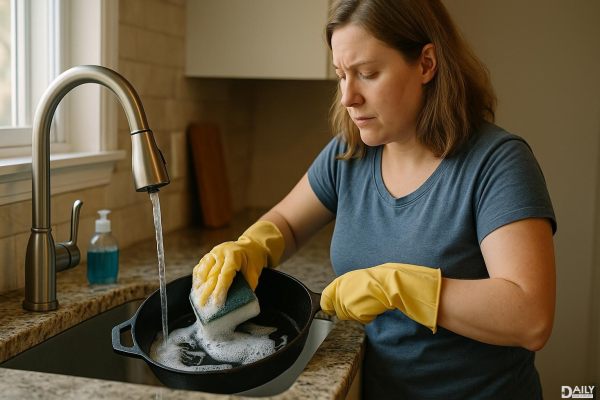You might think your washing machine is self-cleaning since it’s constantly filled with soap and water, but that’s far from the truth. Over time, detergent residue, fabric softener buildup, and even mold can turn your trusty appliance into a grimy mess. Front-loading washers are especially prone to funky smells and hidden gunk due to their airtight seals and moisture-trapping design. But don’t worry—cleaning your front-load washer doesn’t require a PhD in appliance maintenance. With a few simple steps and some basic household products, you can banish odors, remove buildup, and keep your machine running smoothly for years to come.
Why Your Front-Load Washer Needs Regular Cleaning
Front-loading washing machines are notorious for developing musty smells, and it’s not just because you forgot to take out that last load of laundry (though we’ve all been there). The design of these machines—while great for saving water and energy—creates the perfect environment for mold and mildew to thrive. The rubber gasket around the door traps moisture, detergent residue clings to the drum, and leftover lint and grime can accumulate in hidden crevices. If you’ve ever opened your washer and been hit with a whiff of something less than fresh, you know exactly what we’re talking about. Regular cleaning prevents these issues, keeps your clothes smelling better, and even helps your machine run more efficiently.
Gather Your Cleaning Arsenal
Before you dive in, make sure you’ve got the right tools for the job. You don’t need fancy cleaning products—most of what you need is probably already in your pantry. White vinegar is a powerhouse for breaking down mineral deposits and killing mold, while baking soda works as a gentle abrasive and deodorizer. Bleach is great for deep disinfecting (but never mix it with vinegar—more on that later). A microfiber cloth or soft sponge will help scrub away grime, and an old toothbrush is perfect for getting into tight spots like the detergent dispenser and rubber seal. If your washer has a self-cleaning cycle, check the manual to see if it recommends a specific cleaner.
Step-by-Step: How to Clean a Front-Load Washer
Start by running a hot water cycle with two cups of white vinegar to loosen buildup and kill bacteria. While the machine fills, wipe down the door, gasket, and detergent tray with a vinegar-soaked cloth. Pay extra attention to the rubber seal—this is where mold loves to hide. Once the cycle finishes, sprinkle a cup of baking soda into the drum and run another hot cycle to neutralize odors. For stubborn stains or mildew, a diluted bleach solution (½ cup bleach to a gallon of water) can be used to scrub the interior, but always rinse thoroughly afterward. Finally, leave the door and detergent tray open to air dry—this prevents moisture from getting trapped and causing future funk.
Maintenance Tips to Keep Your Washer Fresh
Prevention is key when it comes to keeping your washer clean. After each use, wipe down the door seal and leave the door slightly ajar to promote airflow. Use high-efficiency (HE) detergent to minimize sudsy residue, and avoid overloading the machine—crowded loads don’t rinse as thoroughly. Every month, run a maintenance wash with vinegar or a washing machine cleaner to prevent buildup. If your washer has a “tub clean” cycle, use it! And if you notice persistent odors or mold, consider switching to a detergent with fewer additives or installing a water softener if you have hard water.
What About Top-Loading Washers?
While front-loaders are the usual suspects for mold issues, top-loading machines aren’t immune to grime. The process is similar: Run a hot cycle with vinegar, scrub the agitator or impeller with baking soda, and wipe down the lid and interior. However, top-loaders typically have fewer moisture-trapping spots, so they’re less prone to mildew. Still, monthly cleanings and proper detergent use will keep them in top shape. Always check your manual for model-specific advice—some high-efficiency top-loaders have cleaning cycles just like their front-loading counterparts.
Cleaning your washing machine might not be the most glamorous chore, but it’s one of those maintenance tasks that pays off big time. A fresh-smelling washer means fresher clothes, fewer repairs, and a longer lifespan for your appliance. Plus, there’s something oddly satisfying about watching years of built-up gunk disappear with a little vinegar and elbow grease. So next time you’re folding laundry, take a few extra minutes to show your washer some love—it’s been working hard for you, after all.
























